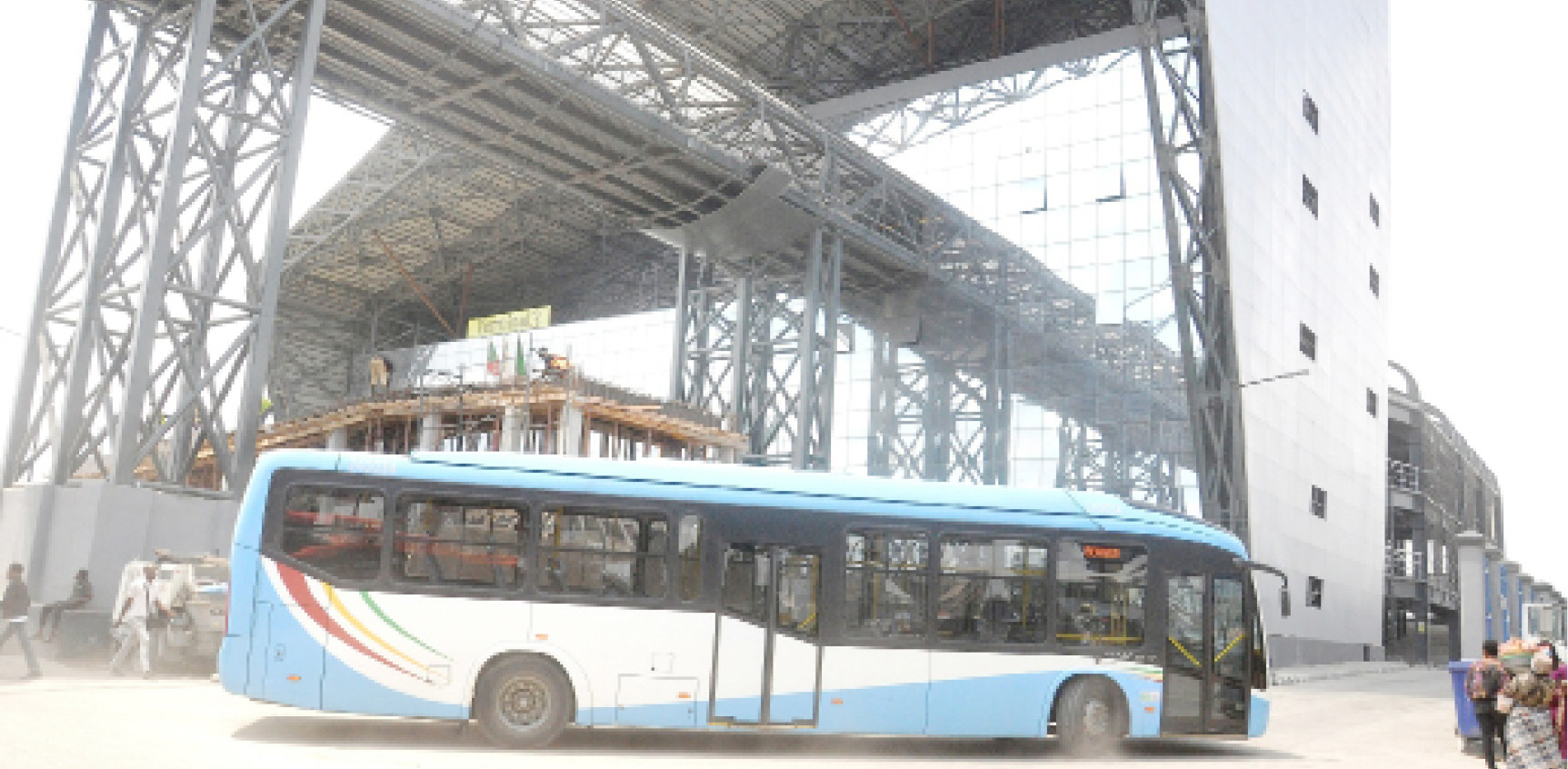How Oshodi interchange is redefining Lagos skyline
The story of Oshodi runs deep in the history of Lagos State. Oshodi was actually the name of a man of Nupe extraction from Niger State. The man, Antonio Landuji Oshodi Tapa, grew up in Lagos and became a slave merchant and warlord, defending the Oba of Lagos against the British that were trading in […]

Oshodi terminal intercharge in Lagos
The story of Oshodi runs deep in the history of Lagos State. Oshodi was actually the name of a man of Nupe extraction from Niger State.
The man, Antonio Landuji Oshodi Tapa, grew up in Lagos and became a slave merchant and warlord, defending the Oba of Lagos against the British that were trading in human beings.
Over a century down the line, the area called Oshodi has become synonymous with rowdiness and crime. This is largely so with the population explosion in Lagos and the convergence of a market and a motor park in the area.
Oshodi has become rustic and dangerous; with a notoriety for crime and drugs and nerve-breaking snarling traffic.
The transformation of Oshodi began with the demolition of a part of the market by the then Governor of Lagaos State, Babatunde Raji Fashola. The reconstruction of the demolished site was undertaken to assist the Federal Government (FG) and the Nigerian Railway Corporation (NRC) with a view to beautifying it and to safeguard lives along the railway corridor, as well as to discourage street trading and indiscriminate use of the space.
However, the proper regeneration of Oshodi into a world class Central Business District (CBD) took off fully in June, 2016, under the immediate past Governor of the state, Akinwunmi Ambode.
The project was developed to feature multi-storey bus terminals, pedestrian bridges, shopping malls, Close Circuit Televisions (CCTVs) and others.
The construction of the transport interchange features the consolidation of all 13 city and interstate parks in Oshodi into three multi-storey bus terminals.
The three floors were designed to be 30,000 square metres (m2) for each terminal to take care of parking and passengers’ sundry demands.
The then Gov. Ambode who spoke at a stakeholders’ forum put together by the state’s Ministry of Physical Planning and Urban Development on the planned regeneration of Oshodi, said the project would transform Oshodi into a world class CBD with business, travel and leisure activities conducted in a serene, secure, clean, orderly and hygienic environment.
Ambode famously said, “The Oshodi you see today shall be a thing of the past.”
The Special Adviser on Urban Development to the former governor, Mrs. Yetunde Onabule, said Oshodi in its present state accommodated about one million pedestrians daily, with about 100,000 passengers accessing the 13 parks scattered within the area, and that 76 per cent of the area was dedicated to transport and related activities which led to serious traffic congestion and other environmental issues.
Mrs. Onabule said the new Oshodi CBD would not only reduce crime in the area, but also go a long way to address the environmental nuisance associated with the area.
She said the new plan would also boost intra-tourism by making the area a tourists’ destination and increase the economic value of the state, where business, travel and leisure activities would be conducted in a serene, secure, clean and orderly environment.
“This plan would see the total rebranding of the Old Oshodi, thus turning Lagos into a befitting and iconic international gateway to the rest of the world. It would also ensure an organised transport system that will ensure free flowing traffic,” she said.
She added that the project was a Public Private Partnership (PPP) initiative between the Lagos State Government, represented by Ibile Holdings, Translink Capital Development Limited and Planet Projects Limited.
Onabule further explained that the Terminal 1; running from Mosafejo Market axis, would be for inter-state transport activities, while Terminals 2 and 3; running from the former Owonifari Market and Adjacent to NAFDAC respectively, would cater for intra-city transport activities.
“The terminals will have standard facilities like waiting area, loading bays, ticketing stands, drivers’ lounge, parking areas, and rest rooms.
“It would also come with accessible walkways and pedestrian bridges and a state-of-the-art sky-walk to link all the three terminals. It will also have bus lanes, lay-bys, green parks to soften the environment and proper waste management strategy, fencing, street lighting and a dedicated security team,” she said.
She added that the total area of the development of the Oshodi CBD master plan, which is about 70,000m2, would also accommodate shopping malls adjacent to the bus terminals.
The interchange was commissioned by President Buhari some months ago.
The Oshodi transport interchange; with three terminals, is now open to Lagos residents who want to commute from Oshodi to TBS, Obalende and CMS.
Lagosians who spoke to Daily Trust about the project expressed different emotions.
A civil servant, Abdulkareem Isiaka, said, “Whenever I share some of the amazing photo shots at the interchange, they look as if they were taken in Dubai or Heathrow-London. This is, however, Oshodi; the same Old Oshodi transformed.”
A civil engineer, Charles Amodu, said, “Kudo’s to the Nigerian company. I think they did a great job. But this is just where it starts; I hope they maintain it and keep up with the standards.
Another resident, Omosoro Ali, said, “Nigeria is moving towards rapid gentrification, and Lagos, with its 1999 blueprint, is leading such movement. This is the new bus interchange and terminal in Oshodi with their bus assembly plant soon to spring up in Epe. Lagos is a season of four governors that learnt from Dubai.”
